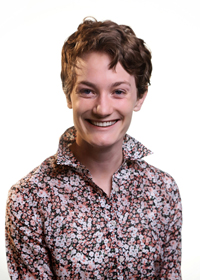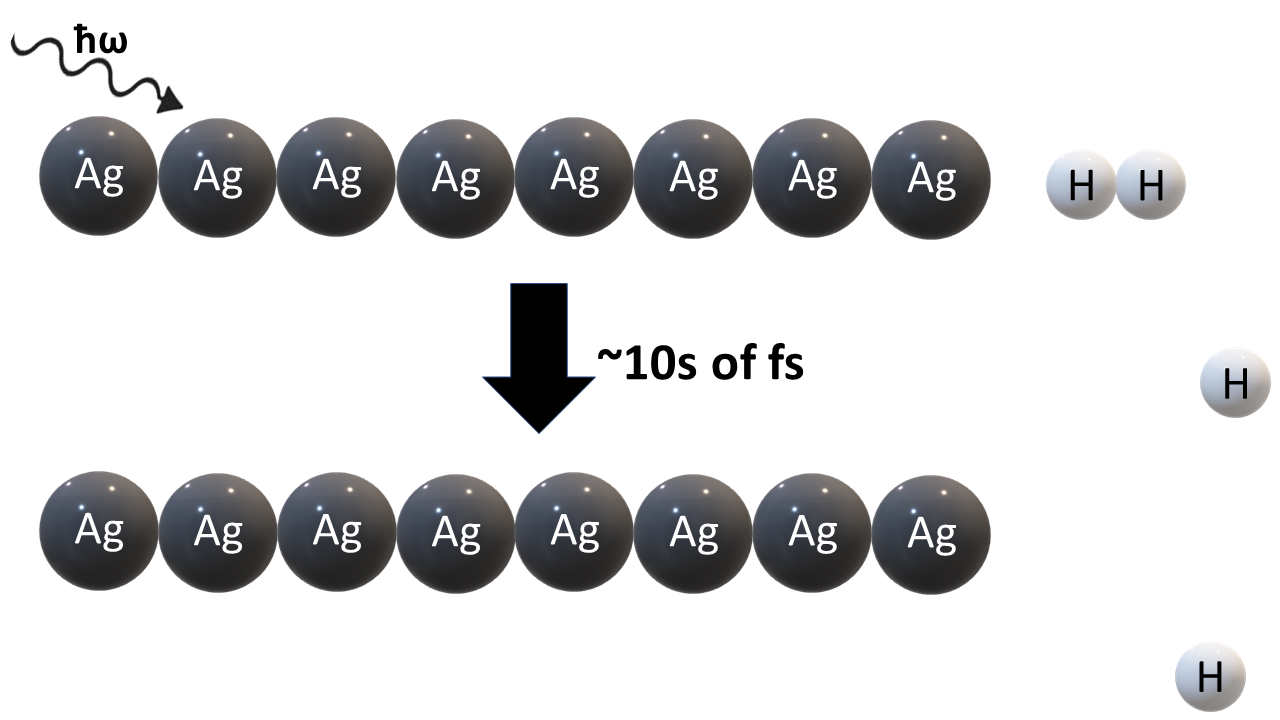
Olivia Hull
Kansas State University
Olivia Hull found her niche in computational chemistry by simulating how water molecules move and orient themselves around lipid bubbles called micelles. These structures have water-loving exteriors and greasy, water-repelling interiors.
“One cool thing we could pick out is that every so often, you'd see a water molecule, just kind of by chance, enter the inside and then just zoom right out. It doesn't want to be there,” she says of the simulation, an undergraduate research project at her alma mater, Wichita State University.
Hull couldn’t have imagined that path just a few years earlier. As a high school senior, the Department of Energy Computational Science Graduate Fellowship (DOE CSGF) recipient took a calculus course for a counterintuitive reason: She didn’t like math. Her aversion bothered her, so she wanted to test it. Hull says she thought, “Maybe there's a difference between algebra and geometry versus a calculus class. And I was very pleasantly surprised.”
Hull majored in mathematics and took biology and chemistry in college as she considered a health or medicine career. “I think it was the moment we started dissecting a fetal pig that I was like, oh, I don't want to poke around bodies ever again,” she recalls. She turned to chemistry and using MATLAB to program and solve puzzles.
Hull has continued on that track as a Kansas State University Ph.D. student. With chemist Christine Aikens, she has modeled plasmonic nanoparticles, clumps of atoms whose electrons oscillate in unison when a specific frequency of light shines on them. Plasmonic nanoparticles can assist with difficult chemical reactions, such as breaking apart carbon dioxide, without using high heat, intense light or other extreme inputs. “It’s a really cool catalysis application,” Hull says, and her computational work explores exactly how the particle cleaves these strong molecular bonds.

During her 2019 practicum at the National Renewable Energy Laboratory, Hull dug deeper into developing computational methods with physicist Derek Vigil-Fowler. His team had worked with BerkeleyGW, a massively parallel code used to study materials’ excited states and optical properties. Such calculations typically include the full range of excited states, or bands, that electrons can occupy, but some are more important than others. Hull worked on strategies to screen out bands that are unimportant to the physics so that calculations remain accurate but run more efficiently.
The collaboration has continued even after the practicum. Hull soon took a parallel computing course at Kansas State as part of her DOE CSGF program of study. For her final project she worked with Vigil-Fowler again to streamline a bottleneck within BerkeleyGW, accelerating the process of inputting wavefunctions, a preliminary step before doing calculations. They’ve continued their work, primarily focusing on boosting the efficiency of codes that run on high-performance computers.
Hull also uses lessons from her practicum in her Kansas State research. Computational chemists constantly struggle with the tradeoff between calculations that are highly accurate and ones that can run on a supercomputer in a reasonable time. In their continuing work on plasmonic nanoparticles, Hull wants to develop approximations and other tools that can speed computation without sacrificing too much accuracy.
After graduation, expected in 2023, Hull hopes to get a national laboratory position. “I really, really loved my experience at NREL,” she says.
The DOE CSGF program of study has expanded Hull’s research perspective, providing her a deeper understanding of quantum mechanics, computer science and programming. The NREL practicum amplified her interest in developing new computational methods. “Having Derek as someone that I work very actively with is also just incredibly helpful and has really shaped my Ph.D.,” she adds.
Besides research, Hull enjoys hiking and running with her dog, Missy. She also restores fountain pens, a hobby she picked up after a summer undergraduate research stint at the University of North Texas, where one of her colleagues constantly wrote with one. Her grandmother found several old pens, which Hull learned to repair and restore. Before long, she was seeking more instruments at antique stores.
The physical sciences come into play there, too. Such pens use capillary action to release ink streams and require little pressure when writing pages of notes, Hull says. “They’re really nice in a practical sense.”
Image caption: Olivia Hull uses computation to model how silver (Ag) nanowires can break a hydrogen (H2) molecule when excited at a special plasmon resonance energy. The H2 dissociates tens of femtoseconds (million-billionths of a second) after excitation. Credit: Olivia Hull.


